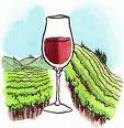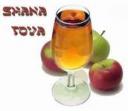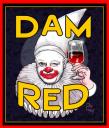I fancy myself an aspiring Israeli wine expert, but I must admit that I have lots to do before I earn any such title. Among the many things I must do is to better acquaint myself with one of Israel’s oldest wineries – Carmel. YES, that Carmel, of the sweet, thick sacramental wine. Well guess what folks, quietly the Carmel people have made HUGE advances in the vineyards, winery & their resulting products. From their single vineyard and appellation series wines to their “supermarket” – “Private Collection” wines – the improvements have been dramatic. And now that the product is better, they have slowly started to market the “new Carmel”, and people are noticing (see a blog post at the Hakerem Israeli wine blog here).
I recently checked out some of their unique single varietal appellation wines (Carignan & Petite Sirah) and was so (surprisingly) impressed by their quality that I included them in a blog post with some recommendations. Clearly they are doing things right at Carmel (marketing wise as well as winemaking) as I was subsequently thanked via email and invited to the winery for a more formal introduction to Carmel and the changes that have been implemented in recent years.
I graciously accepted the invitation and had my appointment there today. Upon arriving at the winery I was greeted by Ruti, a Sommelier and manager of their wine culture center (how is that for marketing?!). A warm and likable person, Ruti was an encyclopedia of information. She started with some very interesting facts about the 120 year history of Carmel. Of interest was how the ambitious founder Baron Rothschild (of the famous Lafite Rothschild) wanted to be completely self sufficient and created both a cooperage (for making barrels) and glass blowing center (for making bottles) at the original winery. Neither stuck, but how cool is that?!
Following our history lesson I was introduced to one of the (many) winemakers. Understanding that wine starts in the vineyard, I was told that changes have been made to improve fruit quality by incentivizing the growers/co-owners to put in extra effort in their vineyards. From shoot thinning & fruit dropping (to lower yields) to leaf trimming (increase fruit exposure to sun) & water management (cutting down on water leads to more concentrated grapes), the growers are doing everything to get their fruit included in the premium wines. And the results in the vineyard are evident. Prior to visiting the winery today I tried their LOW LEVEL supermarket 2007 “Private Collection” Cab/Merlot blend. WOW! Fabulous new packaging to go along with a wine that is a great deal at its price. I was really excited to taste their “better” wines.
And taste I did. Together with a Carmel executive, 2 winemakers & Ruti (yes, I was a bit embarrassed by all the attention) we went through 12 wines – five white & seven red. All REALLY IMPRESSIVE.
The 2007 Carmel Ridge White, a blend of sauvignon blanc (50%), Chardonnay (20%), semillion (15%) & french Colombard (15%) had a hint of effervescence to go along with its crisp acidity & pink grapefruit characteristics. And the 2007 appellation whites: a Viognier, a Gewurtztraminer & a Reisling each seemed varietally correct and had their own unique appeal.
As for the reds, the single vineyard 2005 Kayoumi Cab showed black fruit, was round, approachable and very elegant, while the 2004 Kayoumi Shiraz was very upscale shiraz in style with a touch of black pepper, very fruit forward and a long finish. My favorites of the day were still the appellation Carignan and Petite Sirah. Not because they were the best, but because they were the most unique and really got me thinking. Although the color of the Petite Sirah was incredibly dark (leaning towards being almost black) I was surprised by how light (relatively speaking) the body was. Its gripping tannins and subtle dark chocolate were a pleasure. The wine of the day was the Carignan though. I may have been influenced a bit by Ruti’s enthusiasm for this wine, but it is a wine that truly speaks for itself. The 2005 Appellation Carignan, made from 30-40 year old vines and blended with 10% Petite Verdot had an interesting toffee, mocha, chocolate, cedar thing going on. A BIG juicy, mouth coating wine with creeping tannins and a modest finish – this is a wine you MUST try!
Of note were the alcohol levels of the wines. I have heard some criticism regarding the high alcohol levels of some of Israels wines. Yet i noticed that only the appellation Petite Sirah & Carignan were as high as 14.5% ABV (which clearly did not affect my affinity for them), while others such as the single vineyard wines came in at a more modest 13.5% (as was the appellation viognier which I had thought was a typically high alcohol varietal).
As is being done at the Israel wine revolution leader Golan Heights Winery (AKA Yarden), Carmel is trying to get away from being labeled as kosher, and doing everything possible to instead be considered a World Class winery whose wines JUST SO HAPPEN to also be kosher. If today was any indication, they are well on their way!
Happy World Class CARMEL WINE tasting!
WTG












